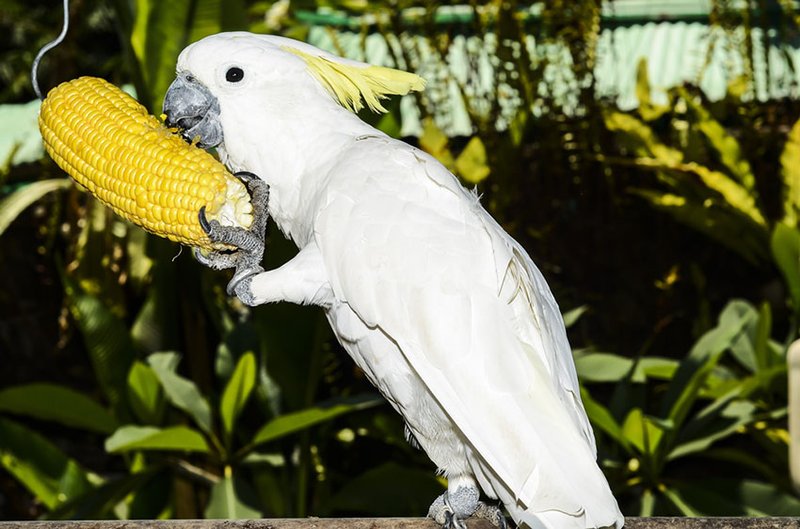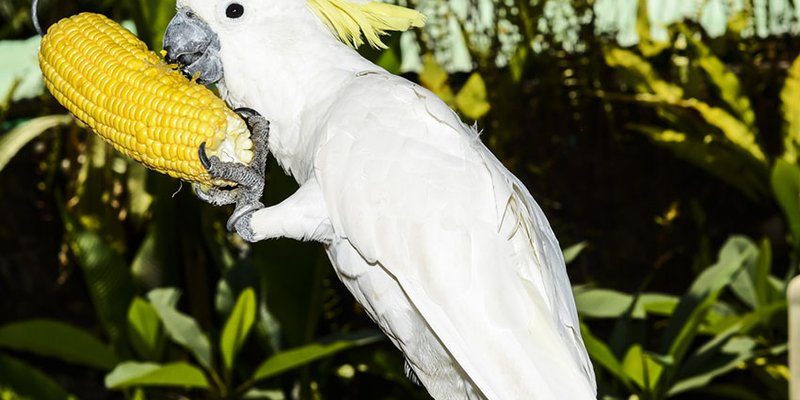
Different species of cockatoos have different diets, and understanding what they eat is key to appreciating their role in their environments. Take the popular Umbrella Cockatoo, for instance. Its diet can provide insights into the broader feeding behaviors of cockatoos everywhere. So, let’s dive deep into what makes these birds so special when it comes to their meals, and how they skillfully hunt or forage for food.
Understanding Cockatoo Diets
Cockatoos are omnivores, which means they eat both plant and animal matter. Their diets can include a wide variety of foods, typically composed of seeds, nuts, fruits, and even some insects. Here’s why that matters: the food they consume influences their behavior and role in their ecosystems.
For example, they’re known to crack open tough nuts using their strong beaks. This not only provides nourishment but also helps to disperse seeds throughout their habitat. When a cockatoo cracks a nut, it doesn’t just fill its belly; it’s essentially planting seeds for future growth. That’s a win-win situation for the cockatoo and the environment!
Some species are more specialized in their diets than others. The Sulphur-Crested Cockatoo, for example, is particularly fond of seeds and fruits found in its natural habitat, while the Moluccan Cockatoo enjoys a mix of fruits and vegetables. Each species has adapted to its surroundings in ways that impact their feeding habits.
Types of Food Cockatoos Eat
Let’s get into the specifics of what these magnificent birds feast on. Cockatoos have a varied diet, which can include:
- Seeds: High in energy, seeds are a staple for many cockatoos.
- Nuts: Hard-shelled nuts like macadamias are a favorite, and cockatoos have the beak strength to crack them open.
- Fruits: They love seasonal fruits like apples, grapes, and berries. These snacks keep their diets diverse.
- Vegetables: Fresh vegetables, such as carrots and leafy greens, can also be part of their meals.
- Insects and larvae: Some cockatoos will hunt for insects, especially during breeding season when their protein needs increase.
You might be wondering how they find all this food. Let’s explore their foraging methods next!
How Cockatoos Hunt and Forage
Cockatoos are clever foragers. They often search for food in groups, which increases their chances of finding tasty treats. This social behavior is a crucial part of their feeding strategy. By working together, they can better spot food sources and alert each other to potential threats.
One of the main techniques cockatoos use is climbing and exploring the trees in their habitats. Their strong feet help them grip branches as they hop from limb to limb, searching for food. This ability to scale trees not only keeps them safe from ground predators but also leads them to hidden treats, like seeds nestled in the cracks of bark.
Another tactic they employ is their vocalization. Some species of cockatoos have a loud, piercing call that can be used to communicate with their flock about food locations. When one cockatoo spots a potential snack, it might call out, and soon you’ll have a whole gang of them swooping down to feast together.
Seasonal Variations in Diet
You might be surprised to learn that cockatoos change their diets depending on the season. In the spring, for example, many cockatoos lean more towards fruits and tender greens, which are abundant. During the dryer months, seeds and nuts become the staples of their diet.
This adaptability ensures that cockatoos can thrive in various conditions. They’ve mastered the art of surviving, even when food sources fluctuate. By changing their diets according to availability, they play a critical role in keeping their ecosystems balanced.
Habitat and Its Impact on Foraging
The type of habitat that cockatoos live in greatly influences their foraging habits. For instance, cockatoos living in dense forests will have access to multiple fruits and nuts, while those in drier regions may rely more heavily on seeds. Each species has adapted behaviors that align with their surroundings.
Take the Black Cockatoo as an example. It prefers woodlands where it can find a mix of fruits and seeds. Its foraging behavior often involves stripping bark to uncover hidden seeds. On the contrary, the Corella finds plenty of ground-based food and will often dig up roots or search for grains.
Understanding their habitats not only helps us appreciate these birds but also highlights the delicate balance in nature. Changes in their environments—like deforestation or climate change—can impact their ability to find food, which raises concerns for their populations.
Challenges in Foraging
Despite their cleverness, cockatoos face numerous challenges when it comes to finding food. Urbanization and habitat destruction can severely limit their access to natural food sources. As buildings replace trees, these birds find it harder to locate their favorite snacks.
Additionally, cockatoos are sometimes viewed as pests. Farmers may see them as a threat to crops, which can lead to measures that harm their populations. While they’re just trying to find food, their reputation can suffer, leading to conflicts with humans.
Moreover, climate change brings unpredictable weather patterns, affecting the availability of food. Droughts can make seasonal fruits scarcer, pushing cockatoos to compete more fiercely for limited resources. It’s a tough world out there for these beautiful birds.
How to Help Cockatoos in Your Area
If you’re passionate about helping cockatoos in your area, there are things you can do! Creating a bird-friendly environment can make a big difference. Here are some tips:
- Plant native trees: Providing local flora can offer food sources and shelter.
- Avoid using pesticides: These chemicals can harm cockatoos and reduce their food supply.
- Provide fresh water: A simple birdbath can help them stay hydrated, especially in hot months.
- Educate others: Share the importance of cockatoos in our ecosystems with friends and neighbors.
By taking these steps, you can support the delicate balance of nature, ensuring that cockatoos—and many other birds—have the resources they need to thrive.
Wrapping Up the Cockatoo’s Culinary Journey
Cockatoos are more than just striking birds with impressive plumage. Their diets and foraging habits showcase their adaptability and intelligence. Whether they’re cracking nuts or sharing food sources with their flock, these birds play an essential role in their ecosystems.
Understanding what they eat and how they find food helps us appreciate them even more. And by supporting their habitats, we can contribute to their survival in a rapidly changing world. So next time you spot a cockatoo, take a moment to admire not just its beauty, but also the clever ways it sustains itself in the wild.

